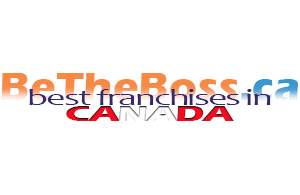George Kottas, owner of the Dekotas Group, has 15 restaurants in the Greater Toronto Area, however none of them have a lounge area or takeout counter, and in the event that you meandered into most, you'd be unable to discover any clients.
These attributes may seem like a formula for a fiasco in the vicious dining world, yet they're the mark of ghost kitchens — a quickly developing food business model where entrepreneurs work numerous delivery-only food businesses from a system of several ‘kitchens-within-a-single-kitchen’ that frequently don't serve walk-in clients.
Ghost kitchens, otherwise called virtual kitchens, have sprung up in expanding numbers over the U.S. and U.K. Just as of late, they have also begun to take hold the Canadian market, which Kottas said is ready for the model. They've been made possible by other services including Uber Eats and Skip the Dishes and are supported by the rise of desire for ease and convenience with regards to dining.
"I never thought in my wildest dreams not having a store presence would work … Now I have 15 stores open," said Kottas, who utilizes Uber Eats and Skip the Dishes for food deliveries for the Dekotas Group organization, which has a range of restaurant options from burritos, to bubble teas and from Middle Eastern and Greek menus. They are planning to open locations in Calgary, Vancouver, Montreal and Ottawa, with the goal of having one ghost kitchen every four-kilometers across Canada.
Ghost kitchen models like his enable business owners to save money on staff and leases relative to the costs of working individual restaurants. At the same time, it allows them to try different things with new food ideas without as much of the financial stretch.
Kottas, a former franchise developer, got the idea when he joined his east-end Toronto breakfast joint Bite Me Grill for Uber Eats and hadn’t indicated set times on the website for when he would take orders. After the restaurant closed in the afternoon, it got to the point where it would frequently get up to 40 orders that would go unfulfilled.
A light went off right away and within a week he began staffing after closing till 9 p.m. a while later he’d staff until midnight, and inside a month it went 24 hours. At that point he began using the kitchen to reach beyond the Bite Me Grill food selection, opening delivery-only kitchens focused on an extensive variety of foods.
While a few critics may state his idea is excessively reliant on in third parties, Kottas said the model is so solid he doesn't need to fuss over his dependence on these services. "Nothing will stop this," he stated, taking note of that ghost kitchens are helping restaurants adapt to increasing minimum wages permitted by law, and food costs. "I don't think it is a fad."
Currently, Kottas has some competition in Canada, said Uber Eats program director Elyse Propis, who notes 50 ghost kitchens in Canada. The vast majority of those are eateries with lounge areas or takeout windows that utilize their kitchens to run delivery-only models on the side, offering totally different food selection from their in-house restaurant.
Propis notes that the model is a good fit since they can leverage the space, the equipment, the staff and many of the ingredients that they already have. Opening a brand-new restaurant is risky and costly and this way, they’re simply adapting a delivery-only restaurant to their already existing kitchen.
Executive chef Joey Hicks said he was "absolutely against" the ghost kitchen idea when he first heard of it. At first, he was put off since he said it takes a month to instruct and prepare staff on the best way to utilize delivery-only apps and cook all the different menus. Cooks should have the capacity to flip between an extensive variety of ideas, including curry, poutine, noodles, fricasseed chicken and pastries, inside a minute's notice.
Now his opinion has changed. "We are ahead of the curve", he said "It is new, but I think in the next six months it is going to be a normal thing for a lot of restaurants … In the next year, I believe every restaurant will have it."

